#the red tent
Text

anita diamant the red tent
kofi
77 notes
·
View notes
Text





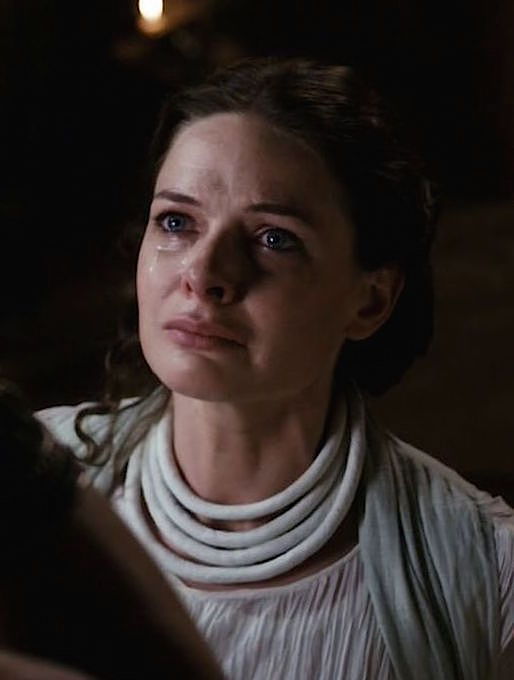


Rebecca Ferguson as Dinah | 'The Red Tent' | 2014
60 notes
·
View notes
Text
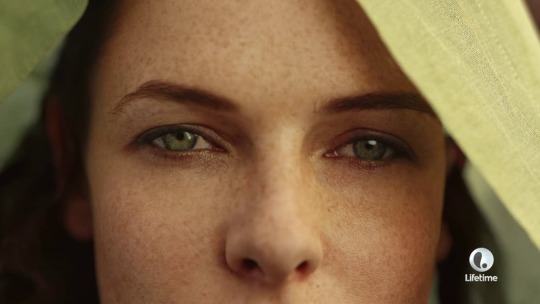
Rebecca Ferguson in The Red Tent
55 notes
·
View notes
Text

"As April leaves us like a lamb
May comes dancing in
The sunlight glowing up the sky
And celebrations can begin."– F. Scott Fitzgerald, The Short Stories
The May Day celebrations of Tudor England, which were marked by dancing, feasting, and the crowning of a May Queen and King. The Maypole, Morris Dance, and gathering of flowers and greenery were also important features of the day.In England, May Day celebrations have a long history dating back to pre-Christian times. And was traditionally a time to celebrate the return of spring and the coming of summer.
During the Middle Ages, May Day was a popular holiday for the nobility and commoners alike. The day was marked by the Maypole dance, in which a tall pole was erected and decorated with flowers and ribbons. Young men and women would dance around the Maypole, holding onto the ribbons and weaving intricate patterns. In the 16th century, May Day was suppressed by the Puritans, who saw the festivities as pagan and immoral. However, May Day celebrations continued in rural areas and were eventually revived in the 19th century as part of the Victorian era's romanticism of the past.
One of the most famous May Day celebrations in England took place in 1515, during the reign of Henry VIII. The celebration was held in the gardens of Greenwich Palace and featured a magnificent Maypole that was over 80 feet tall. According to historical accounts, the Maypole was decorated with gold and silver, and the dancing went on for hours.
"May Day was a time of joy and revelry, when the young and old alike took part in the celebrations. The Morris Dance, with its bells and ribbons, was a popular feature of the day, as was the crowning of the May Queen and King. The Maypole, with its colorful streamers, was a symbol of the coming of spring and the renewal of life." - From "Tudor England: An Encyclopedia" edited by Arthur F. Kinney
#perioddramaedit#the may day#may day#history#period drama#period drama costumes#perioddramacentral#perioddramasource#perioddramasonly#period dramas#marie antoinette#la belle et la bete#medici#sarah felberbaum#maddalena#becoming elizabeth#the red tent#the tudors#anne boleyn#katheryn howard#rebecca ferguson#lea seydoux#kirsten dunst#tamzin merchant#f scott fitzgerald#quotes#words#spring#celebration
37 notes
·
View notes
Quote
I am so grateful that you have come. I will pour out everything inside me so you may leave this table satisfied and fortified. Blessings on your eyes. Blessings on your children. Blessings on the ground beneath you. My heart is a ladle of sweet water, brimming over. Selah.
Anita Diamant, The Red Tent
22 notes
·
View notes
Text
I deeply admire and appreciate The Red Tent for what it is, biblical fiction written by a Jewish woman to give voice to the women of the Torah whose stories were so often left untold or only mentioned in tragedies.
But also Dinah talks A LOT about how handsome her brothers are and how handsome they are compared to her cousins and she did once get off to listening to her brother have sex and incest seems to be a pretty common theme here beyond just what's canonical.
27 notes
·
View notes
Text
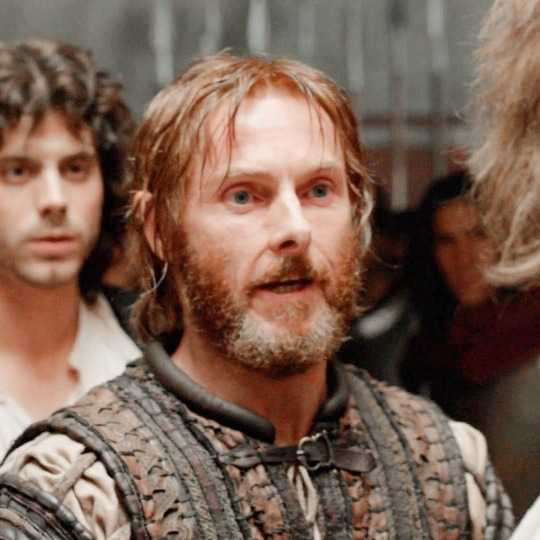

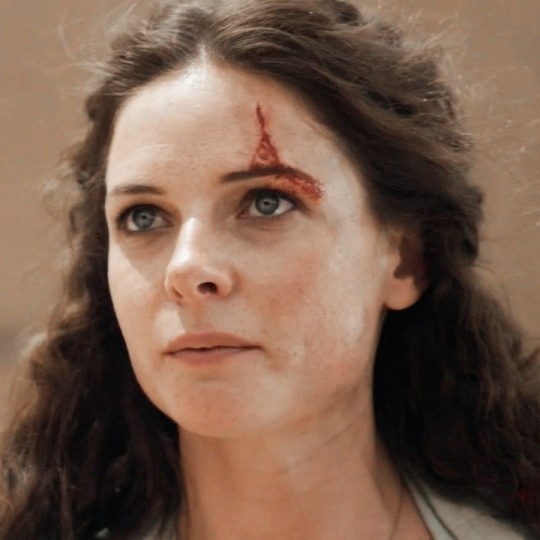




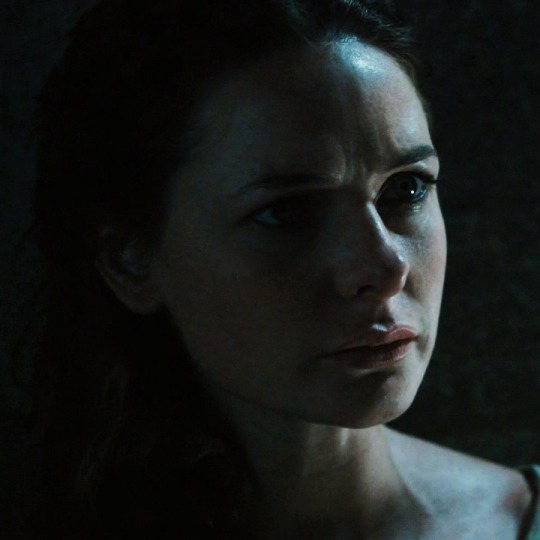


34 notes
·
View notes
Text
Egypt loved the lotus because it never dies. It is the same for people who are loved. Thus can something as insignificant as a name—two syllables, one high, one sweet—summon up the innumerable smiles and tears, sighs and dreams of a human life.
Anita Diamant - The Red Tent
5 notes
·
View notes
Text
“I wanted to cry, but I realized that I was too old for that. I would be a woman soon and I would have to learn how to live with a divided heart.”
The Red Tent.
- Anita Diamant -
The Red Tent (2014).
Directed by Roger Young.
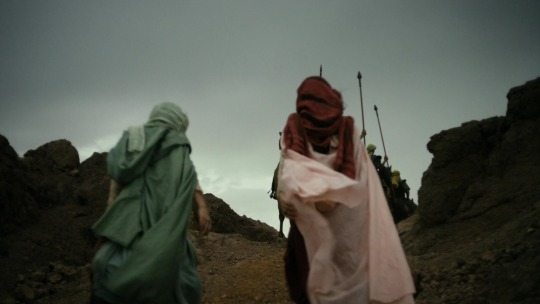
Rebecca Ferguson - Morena Baccarin
2 notes
·
View notes
Text
Summer TBR (so far)

A Court of Silver Flames (ACOTAR series) by Sarah J. Maas
Nesta Archeron has always been prickly-proud, swift to anger, and slow to forgive. And ever since being forced into the Cauldron and becoming High Fae against her will, she's struggled to find a place for herself within the strange, deadly world she inhabits. Worse, she can't seem to move past the horrors of the war with Hybern and all she lost in it. The one person who ignites her temper more than any other is Cassian, the battle-scarred warrior whose position in Rhysand and Feyre's Night Court keeps him constantly in Nesta's orbit. But her temper isn't the only thing Cassian ignites. The fire between them is undeniable, and only burns hotter as they are forced into close quarters with each other.
Meanwhile, the treacherous human queens who returned to the Continent during the last war have forged a dangerous new alliance, threatening the fragile peace that has settled over the realms. And the key to halting them might very well rely on Cassian and Nesta facing their haunting pasts. Against the sweeping backdrop of a world seared by war and plagued with uncertainty, Nesta and Cassian battle monsters from within and without as they search for acceptance-and healing-in each other's arms.
House of Earth and Blood (Crescent City series) by Sarah J. Maas
Bryce Quinlan had the perfect life-working hard all day and partying all night-until a demon murdered her closest friends, leaving her bereft, wounded, and alone. When the accused is behind bars but the crimes start up again, Bryce finds herself at the heart of the investigation. She'll do whatever it takes to avenge their deaths.
Hunt Athalar is a notorious Fallen angel, now enslaved to the Archangels he once attempted to overthrow. His brutal skills and incredible strength have been set to one purpose-to assassinate his boss's enemies, no questions asked. But with a demon wreaking havoc in the city, he's offered an irresistible deal: help Bryce find the murderer, and his freedom will be within reach.
As Bryce and Hunt dig deep into Crescent City's underbelly, they discover a dark power that threatens everything and everyone they hold dear, and they find, in each other, a blazing passion-one that could set them both free, if they'd only let it.
Braiding Sweetgrass: Indigenous Wisdom, Scientific Knowledge, and the Teachings of Plants by Robin Wall Kimmerer
As a botanist, Robin Wall Kimmerer has been trained to ask questions of nature with the tools of science. As a member of the Citizen Potawatomi Nation, she embraces the notion that plants and animals are our oldest teachers. In Braiding Sweetgrass, Kimmerer brings these lenses of knowledge together to show that the awakening of a wider ecological consciousness requires the acknowledgment and celebration of our reciprocal relationship with the rest of the living world. For only when we can hear the languages of other beings are we capable of understanding the generosity of the earth, and learning to give our own gifts in return.
The Red Tent by Anita Diamant
Her name is Dinah. In the Bible, her life is only hinted at in a brief and violent detour within the more familiar chapters of the Book of Genesis that are about her father, Jacob, and his dozen sons. Told in Dinah's voice, this novel reveals the traditions and turmoils of ancient womanhood—the world of the red tent. It begins with the story of her mothers—Leah, Rachel, Zilpah, and Bilhah—the four wives of Jacob. They love Dinah and give her gifts that sustain her through a hard-working youth, a calling to midwifery, and a new home in a foreign land. Dinah's story reaches out from a remarkable period of early history and creates an intimate connection with the past. Deeply affecting, The Red Tent combines rich storytelling with a valuable achievement in modern fiction: a new view of biblical women's society.
Orlando by Virginia Woolf
Virginia Woolf's Orlando 'The longest and most charming love letter in literature', playfully constructs the figure of Orlando as the fictional embodiment of Woolf's close friend and lover, Vita Sackville-West. Spanning three centuries, the novel opens as Orlando, a young nobleman in Elizabeth's England, awaits a visit from the Queen and traces his experience with first love as England under James I lies locked in the embrace of the Great Frost. At the midpoint of the novel, Orlando, now an ambassador in Constantinople, awakes to find that he is now a woman, and the novel indulges in farce and irony to consider the roles of women in the 18th and 19th centuries. As the novel ends in 1928, a year consonant with full suffrage for women. Orlando, now a wife and mother, stands poised at the brink of a future that holds new hope and promise for women.
I Know Why the Caged Bird Sings by Maya Angelou
Here is a book as joyous and painful, as mysterious and memorable, as childhood itself. I Know Why the Caged Bird Sings captures the longing of lonely children, the brute insult of bigotry, and the wonder of words that can make the world right. Maya Angelou’s debut memoir is a modern American classic beloved worldwide.
Sent by their mother to live with their devout, self-sufficient grandmother in a small Southern town, Maya and her brother, Bailey, endure the ache of abandonment and the prejudice of the local “powhitetrash.” At eight years old and back at her mother’s side in St. Louis, Maya is attacked by a man many times her age—and has to live with the consequences for a lifetime. Years later, in San Francisco, Maya learns that love for herself, the kindness of others, her own strong spirit, and the ideas of great authors (“I met and fell in love with William Shakespeare”) will allow her to be free instead of imprisoned.
Crying in H Mart by Michelle Zauner
A memoir about growing up Korean American, losing her mother, and forging her own identity.
Michelle Zauner tells of growing up one of the few Asian American kids at her school in Eugene, Oregon; of struggling with her mother’s particular, high expectations of her; of a painful adolescence; of treasured months spent in her grandmother’s tiny apartment in Seoul, where she and her mother would bond, late at night, over heaping plates of food.
As she grew up, moving to the East Coast for college, finding work in the restaurant industry, and performing gigs with her fledgling band—and meeting the man who would become her husband—her Koreanness began to feel ever more distant, even as she found the life she wanted to live. It was her mother’s diagnosis of terminal cancer, when Michelle was twenty-five, that forced a reckoning with her identity and brought her to reclaim the gifts of taste, language, and history her mother had given her.
Cunt: A Declaration of Independence by Inga Muscio
An ancient title of respect for women, the word cunt long ago veered off this noble path. Inga Muscio traces the road from honor to expletive, giving women the motivation and tools to claim cunt as a positive and powerful force in their lives. In this fully revised edition, she explores, with candidness and humor, such traditional feminist issues as birth control, sexuality, jealousy between women, and prostitution with a fresh attitude for a new generation of women. Sending out a call for every woman to be the Cunt lovin Ruler of Her Sexual Universe, Muscio stands convention on its head by embracing all things cunt-related.
Women Who Run with the Wolves: Myths and Stories of the Wild Woman Archetype by Clarissa Pinkola Estés
"Within every woman there is a wild and natural creature, a powerful force, filled with good instincts, passionate creativity, and ageless knowing. Her name is Wild Woman, but she is an endangered species. Though the gifts of wildish nature come to us at birth, society's attempt to 'civilize' us into rigid roles has plundered this treasure, and muffled deep, life-giving messages of our own souls. Without Wild Woman, we become overdomesticated, fearful, uncreative, trapped."
In her now-classic book that spent 144 weeks on the New York Times hardcover bestseller list, and is translated into 35 languages, Clarissa Pinkola Estés, Ph.D., shows how woman's vitality can be restored through what she calls "psychic archaeological digs" into the ruins of the female unconscious. Dr. Estés uses her families' ethnic tales, washed and rinsed in the blood of wars and survival, multicultural myths, her own lyric writing of those fairy tales, folk tales, and stories chosen from her life witness, and also research ongoing for twenty years… that help women reconnect with the healthy, instinctual, visionary attributes of the Wild Woman archetype.
Glenstone Field Guide 02 Edited by Emily Wei Rales and Fanna Gebreyesus
This Field Guide intends to serve as a lighthearted, by no means exhaustive primer for the curious Glenstone visitor. Structured as an illustrated index, it is divided into three sections: art, architecture, and landscape. Each section includes related terms and entries written by Glenstone staff and collaborators. Collectively, these voices share the multiple ideas, histories, anecdotes, and facts that make up the Glenstone story, and offer a glimpse into what can be seen onsite. Integrated throughout are statements from founders Emily Wei Rales and Mitchell P. Rales that highlight the key principles of community, sustainability, design, integration, and direct engagement, which guide Glenstone’s mission. Glenstone exists for you, our visitor, and we hope you will explore, engage, enjoy, and return often. You are always welcome.
#books#tbr#summer tbr#a court of silver flames#acosf#crecent city#sarah j maas#house of earth and blood#braiding sweetgrass#the red tent#orlando#i know why the caged bird sings#inga muscio#clarissa pinkola estes#women who run with the wolves#maya angelou#glenstone#crying in hmart#booklr
5 notes
·
View notes
Quote
In the red tent we knew that death was the shadow of birth, the price women pay for the honor of giving life. Thus, our sorrow was measured.
— The Red Tent (Anita Diamant)
#book quotes#historical fiction#anita diamant#the red tent#death#life#pregnancy#childbirth#family#mothers#babies#grief#loss#sadness#sorrow#philosophy
11 notes
·
View notes
Text
film reviews: The Red Tent (1969)
The Red Tent is a 1969 historical disaster drama film directed by Mikhail Kalatozov. A Russian-Italian coproduction, it was filmed in English and in Russian and released in three different versions, one for Italy, one for the Soviet Union, an one for international audiences. The International version features a soundtrack composed by Ennio Morricone acclaimed for its beauty.
Synopsis: In Spring 1928, Umberto Nobile, an Italian designer of airships, leads a second expedition to the North Pole in his new airship Italia, two years after explorer Roald Amundsen flies Nobile’s airship Norge to the North Pole. The Italia charts a course north from Italy through Germany and Norway to King’s Bay in Svalbard, where it starts its final leg to the North Pole. Although they reach the North Pole successfully on May 24, the flight ends in disaster the next day, as the airship, weighed down by ice, crashes into the Arctic ice pack and the control gondola breaks free of the envelope. No longer weighed down by the gondola, the envelope lifts off and floats away, taking some of Italia’s crew with it. Stranded on the ice pack, Nobile takes command of the rest of the survivors, and they gather supplies and wait for rescue. They find a tent among the supplies, and dye it red for visibility.
The survivors use a radio set to call for help, but the airwaves are swarmed by reporters in Svalbard, where a media circus is in progress, and a young amateur radio operator in Russia is the first to hear and relay their distress calls. The rescue mission is chaotic and three weeks go by with only intermittent contact with the outside world. Three men depart from the main group, intending to walk the 90 miles to dry land to direct rescuers back to the main group. Roald Amundsen takes place in the rescue operations, but his plane disappears in the Arctic and he becomes another casualty in the disaster. Several other rescue planes crash in the Arctic, stranding their crews on the ice. The first rescuer to make contact with the survivors arrives in a small plane on June 22 and can only take on one person, and insists Nobile come with him. Thinking he can lead rescue operations better from King’s Bay, Nobile agrees, and flies with him back to base, where he is court-martialed by the Italian government for abandoning his crew, is confined to his cabin, and is not allowed to help with the rescue efforts. The rest of the ground survivors remain marooned, with a ship on its way to rescue them helplessly stranded in the ice, and the fate of those carried away in the envelope unknown. Both the survivors who trekked and the ones who remained at the camp survive harrowing conditions. Finally on 12 July, the survivors of the two groups are rescued by another icebreaker, seven weeks after their ordeal began.
Nobile’s decision and his perceived cowardice by the world haunt him for the rest of his life, and he is unable to move on from the disaster, the part he played in it, and the lives that were lost in the expedition. Forty years after the expedition, now an old man, he calls on the spirits of those lost to return to him, and put him on trial. In this way it will finally be decided if he is truly guilty or not. Most of the spirits reach the verdict of Guilty, but Amundsen’s spirit arrives and overturns the verdict, saving Nobile’s soul from damnation.
Review: A good movie. The idea to frame the story as the memories of Nobile being retold while he is put on trial by those that died is very artful and philosophical, and sets this film apart from other historical disaster films.
The film was a Soviet-Italian coproduction, and the influx of Western cash and filmmaking technical know-how shows in the sets, miniature models, and special effects, which are all of very high quality, as good as anything in American films of the day. At the same time the film has the soul of Soviet filmmaking in its core, and boasts very fine directing and acting across the board (not to rag on Italian cinema, which also boats a fine acting tradition). In watching the disaster unfold, one begins to understand Nobile’s guilt and pain, which the actor displays as a quiet anguish, and the struggle to live with himself in the years after the disaster.
Naturally, the film leaves out some details of the Italia disaster for coherency of script, as any historical disaster film does, but I was disappointed that it didn’t depict Chief Mechanic Ettore Arduino, who was in the envelope, throwing down supplies onto the ice for the survivors after the crash in the last moments before the envelope drifted out of sight. His presence of mind and actions directly helped save the lives of the survivors on the ice in the initial few weeks of their ordeal. The film also places a bit more importance than is due on the Soviet parts of the rescue mission, which was an international effort.
Admittedly, the film is a little loose with historical accuracy. The character of Valeria, a nurse from King’s Bay who falls in love with Finn Malmgren, and later spurs Amundsen to help with the rescue effort, is completely fictional; in reality Malmgren had a fiancee back in Sweden whom he planned to marry, and Amundsen helped with the rescue efforts gladly of his own accord. Umberto Nobile himself watched the Italian premiere of the film, and he objected to “wanting a hot bath” as a partial motivation for abandoning his crew, denying it vehemently. Lundborg, the pilot who rescued Nobile, was an upright man in real life, not at all like his devious character in the movie. Additionally, Amundsen’s exact fate after taking off is unknown, as is the fate of those stranded in the Italia’s envelope; his ghost’s story that he spotted the downed envelope and what appeared to be survivors and tried to land, but his plane crashed and his pilot was killed, and he climbed out only to realize there were only dead bodies on the ice, before he eventually froze to death as well, is made up.
The movie is not the most exciting disaster movie, but it’s thoughtfully scripted very atmospheric. The cinematography highlights the beauty and ferocity of the Arctic, and the historicity of the tale makes it an interesting watch. The Russian version of the film has been uploaded on YouTube in two parts, and can be watched here: Part 1, Part 2 (be warned, the image size in Part 2 is very small). The film can also be watched in English, and in better definition, on Amazon Prime. I recommend the English version, which has Morricone’s soundtrack.
2 notes
·
View notes
Text





Rebecca Ferguson and Iain Glen | Portraying father and daughter | The Red Tent (2014) | Silo (2023)
103 notes
·
View notes
Text
For weeks and months and years, my face lived in the garden, my scent clung to the sheets. For as long as he lived, I walked with him by day and lay down with him at night.
—Anita Diamant, The Red Tent
12 notes
·
View notes
Text

I prayed to God for a son who would be a leader, a prince among his people, and God granted my prayer. But I never knew that it would mean losing him." - Dinah, Chapter 7
"Education was a crucial aspect of the upbringing of princes in ancient Egypt, as it was believed that a well-educated prince would make a better ruler. The education of princes was comprehensive and rigorous, with a focus on developing their intellectual and physical capacities." - Toby Wilkinson, "The Rise and Fall of Ancient Egypt"
In ancient Egypt, education for princes was highly valued and was considered an essential aspect of their upbringing. The education of princes was designed to prepare them for their future roles as rulers and was focused on developing their intellectual, physical, and moral capacities.
The education of princes was conducted in specialized schools, known as the "House of Life" or "Per Ankh." These schools were often located within temple complexes, and their curriculum included a wide range of subjects such as writing, reading, mathematics, astronomy, medicine, religion, history, music, and sports.
Princes were taught by highly trained scribes and priests who were experts in their respective fields. The education system was highly structured and rigorous, and the curriculum was designed to develop critical thinking and problem-solving skills.
The education of princes also included training in military and administrative skills. Princes were taught to ride horses, hunt, and fight with weapons. They were also taught the basics of administration, such as how to manage finances and handle diplomatic affairs.
"The education of princes in ancient Egypt was designed to prepare them for the complex role of ruler, which required not only knowledge of administrative and military matters, but also a deep understanding of religion and morality." - John Romer, "Ancient Lives: The Story of the Pharaohs' Tombmakers"
#perioddramaedit#edit#the red tent#theredtentedit#dinah the red tent#anita diamant#rebecca ferguson#rfergusonedit#remose#history edit#historyedit#history#egyptian history#egypt#ancient egypt#ancient history#dinah#historical women#historical figures#oholibamah#the red tent film#ancient civilizations#egyptian#dinah the Bible#women in bible#women of bible#litedit#historical facts#perioddramacentral#perioddramasource
28 notes
·
View notes
Quote
And now you come to me—women with hands and feet as soft as a queen's, with more cooking pots than you need, so safe in childbed and so free with your tongues. You come hungry for the story that was lost. You crave words to fill the great silence that swallowed me, and my mothers, and my grandmothers before them.
Anita Diamant, The Red Tent
11 notes
·
View notes